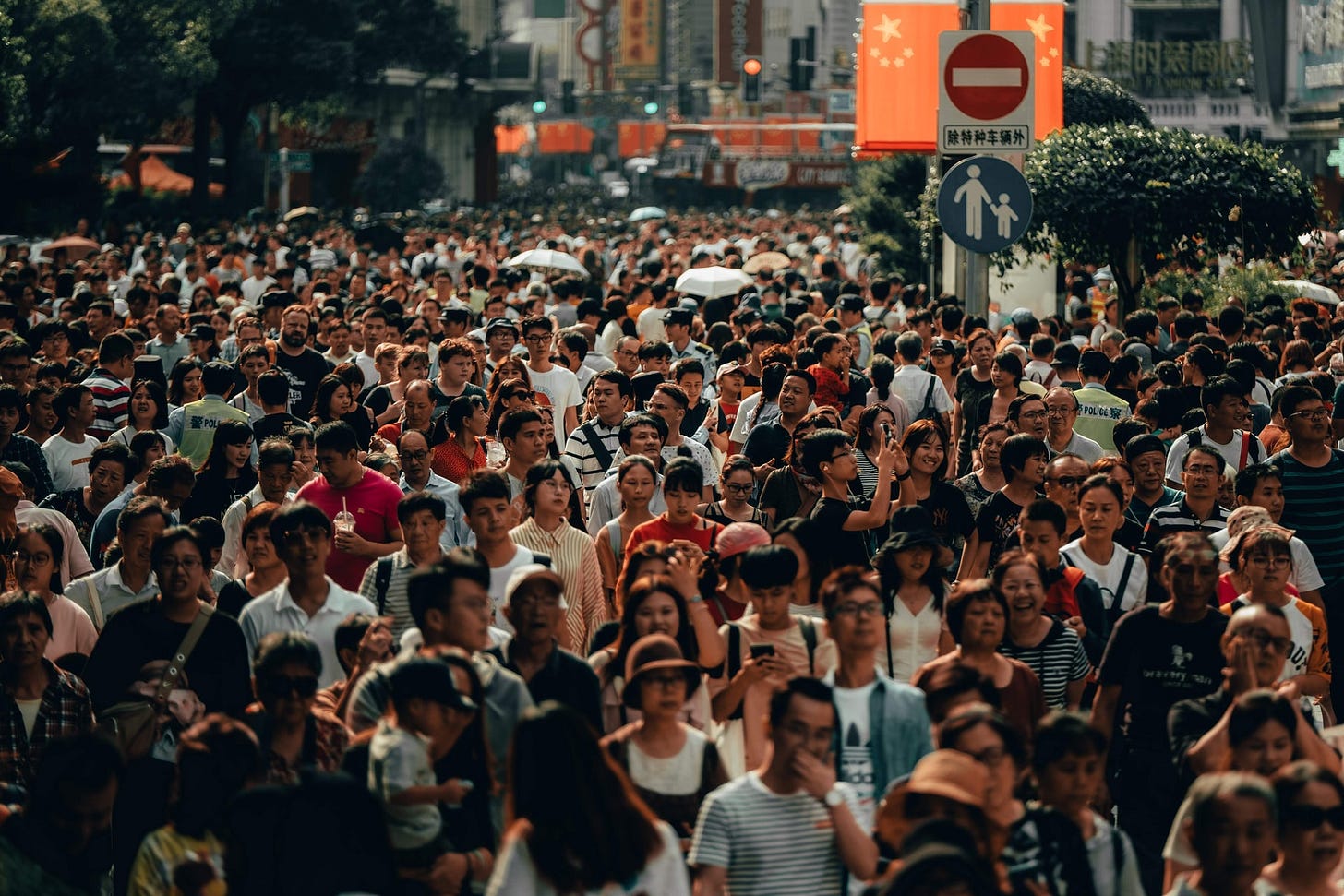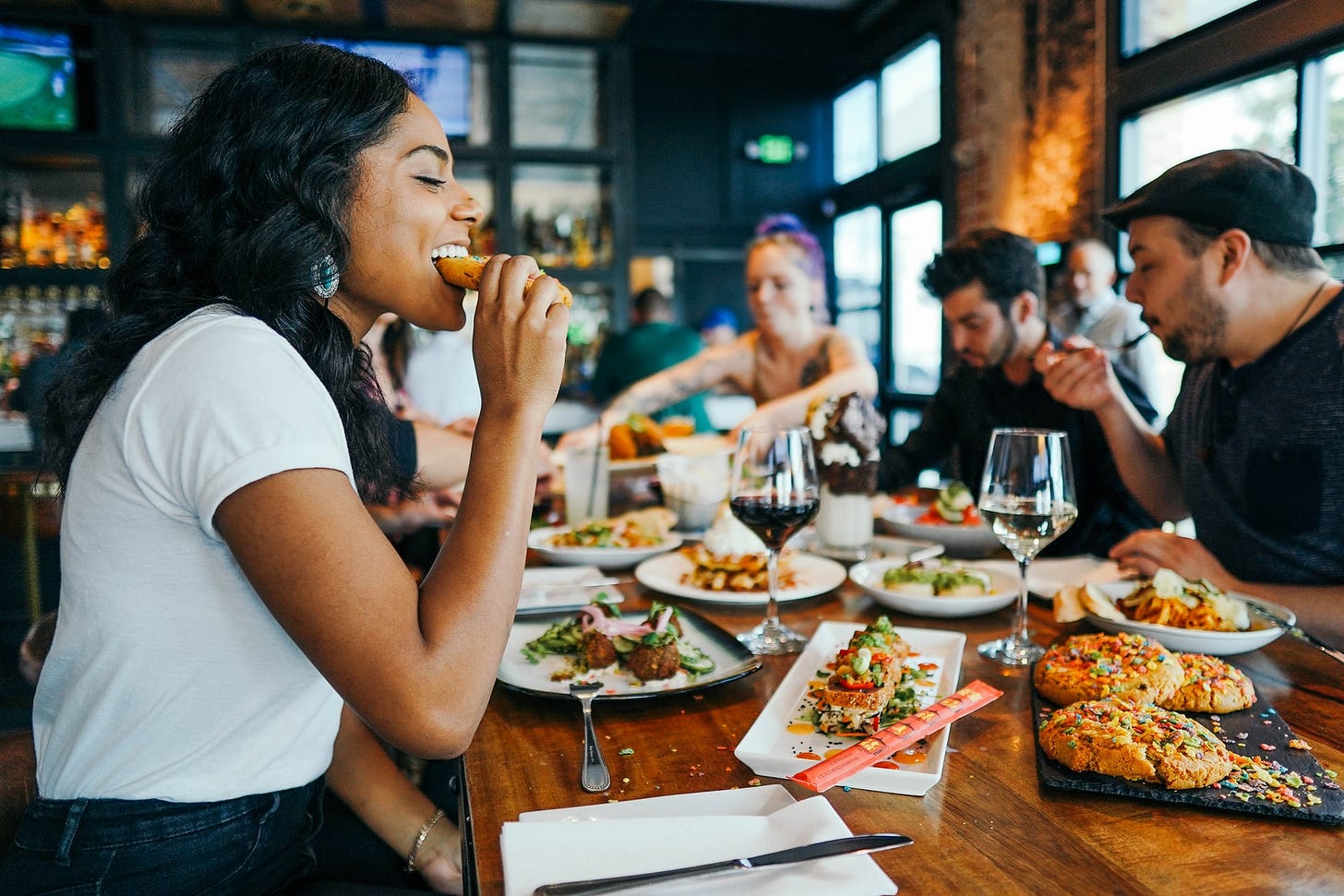One Solution for a Broken Food System (part 5)
Can we continue eating ourselves silly and still feed 10 billion people by 2050? 🍔🌎
In part 4 of this series, we pulled back the curtain on damaging food policies and examined the impact of food deserts and unequal food availability. Now, we'll move on to how our current shopping and eating habits undermine the food systems' viability in light of a growing population.
Missed a previous part? Catch up here:
Part 1 — Part 2 — Part 3 — Part 4
10 Billion By 2050: Feeding a Growing Population
The world's population is expected to reach 9.7 billion by 2050 and 10.9 billion by 2100. Although projections show the growth rate will level off over time, some argue that it will be impossible to feed so many people if we continue our current food consumption and production habits.
Photo by Owen Cannon on Unsplash
Average daily calorie consumption in many developed nations is far above what's considered normal or healthy. For example, Americans eat over 3,600 calories per day. Gorging ourselves this way has contributed to an obesity epidemic that affects more than 42% of the adult population. (Meanwhile, we're wasting 31.9% of the food we buy.)
Feeding this cycle of overconsumption and waste requires massive output from food production. American red meat and poultry intake alone amounts to about 223 pounds per person per year. Translate this into actual animals, and we're raising:
9 billion chickens for 42.2 billion pounds of chicken meat
32.2 million cattle and calves for 26.3 billion pounds of beef
This is particularly troubling where resources are considered. Meat, particularly beef, requires significantly more water and land to produce than even the most resource-intensive plant-based foods. With demand for meat increasing in countries like India and China, worldwide production will have to increase simply to feed the current population's appetite—never mind the additional 1.8 billion expected by 2050.
We already use approximately 50% of all habitable land for agriculture and 38.5% only for feeding and raising food animals. By some estimations, supporting global food consumption for the the 2050 population will require clearing additional land amounting to twice the size of India and put further strain on an already overburdened agricultural system.
Proposed solutions:
Cultured and plant-based meat alternatives that use fewer resources than animal meat
Using technology, education and awareness to curb food waste
Reducing meat intake or shifting to more sustainable meat sources
Shifting toward plant-based eating patterns in developed nations
Converting land used to produce livestock to grow crops that can feed people directly
Adopting more efficient, sustainable and environmentally friendly agricultural practices
Changing dietary habits to reflect realistic, healthy consumption levels
Consumers: Unrealistic Expectations and Food Addictions
Getting people to change their diets presents significant challenges. Many of us cling more tightly to our dietary patterns, habits and traditions than we do to our religious convictions. (We'll skip church on Sunday for a football game, but God forbid someone tries to take away our hamburgers.)
We eat what we want, when we want—and far more of it than we should. Portion sizes have ballooned out of control, resulting in a skewed idea of what a "normal" meal looks like. We can easily exceed an entire day's caloric requirement by eating one restaurant dish—but anything less makes us feel like we're not getting our money's worth.
Photo by Alex Haney on Unsplash
And, despite all the issues with the supply chain, we still expect uninterrupted access to the staple foods in our diets. We want constant access to hundreds of different products but have no concept of what goes on behind the scenes to get them on the shelves. We've grown used to low prices supported by subsidies and balk at the idea of paying what food might actually cost if those subsidies disappeared.
Both food addiction and our collective lack of knowledge make us resistant to change. Breaking out of the grip of salt, sugar and fat requires us to shift our thinking and develop new—and healthier—habits. Many of us lack the cooking skills and experience to create healthy meals that are also enjoyable, and learning to do so often seems like an insurmountable task.
Proposed solutions:
Diet plans that attempt to change eating habits by cutting out or emphasizing certain foods
Making nutrition and cooking an integral part of childhood education
Consumer education through community and industry initiatives
In-store consumer education and shopping help from dietitians and health coaches
Adjusting portion sizes to reset expectations to healthier levels
Restaurants and Retail: Hotbeds of Waste and Vice
To be fair, not all the blame falls us as consumers. The eating and shopping environments surrounding us, known as the foodscape, can significantly influence the choices we make.
Illusion in the Grocery Aisles
Supermarkets present a dizzying array of products ranging from fresh produce to ultra-processed microwavable meals. Advertisements promise rock-bottom prices on some of the least-nutritious items in stock. When we reach the checkout line, shelves full of candy bars and coolers stuffed with sugary soda entice us to make a few last-minute impulse purchases.
Seasonality has all but disappeared, giving us the illusion that it's completely normal to have tomatoes in the dead of winter and butternut squash at the height of summer. And the produce is always in pristine condition; neither bruises nor irregularities are allowed.
This environment creates unrealistic expectations of perfection and availability and sets up a feedback loop that causes us to feel jarred when we see something out of place and puts pressure on food retailers to maintain the established ideal.
Glamorizing Restaurant Waste
Restaurants also feel pressured to deliver the greatest perceived value. This often manifests in “more bang for your buck“ deals that promise giant portions at low prices.
But what winds up happening much of the time?
Waste.
Restaurants in the U.S. waste 22 to 33 billion pounds of food every year, 4% to 10% of which becomes trash before it ever has a chance to get to diners. (More is wasted at home when forgotten leftovers wind up in the trash.)
Some chefs have begun repurposing food waste into special dishes that highlight items previously destined for landfills. While this approach may serve to raise awareness, it also distracts from the waste problem as a whole.
These dishes draw us with their novelty but give the mistaken impression that choosing one fancy upcycled dish at a specialty restaurant somehow makes us superheroes in the fight against food waste—even if our other wasteful habits remain the same.
Proposed solutions:
Marketing "ugly" fruits and vegetables to make them more appealing
Rerouting culled food and food products to food banks, homeless shelters and other community feeding programs
Changing ultra-processed food formulations to minimize their addictive qualities
Restructuring grocery stores to make nutritious choices easier and more accessible
Making smaller sizes and healthier foods the default options at restaurants
Next time, we'll revisit the concepts from part 1 to discover a single, straightforward solution to the eight food system problems discussed in this series. (Yes, there is just one!) Stay tuned for part 6, coming November 30.
Thanks to Foster member Tom White for his help finalizing this piece!



